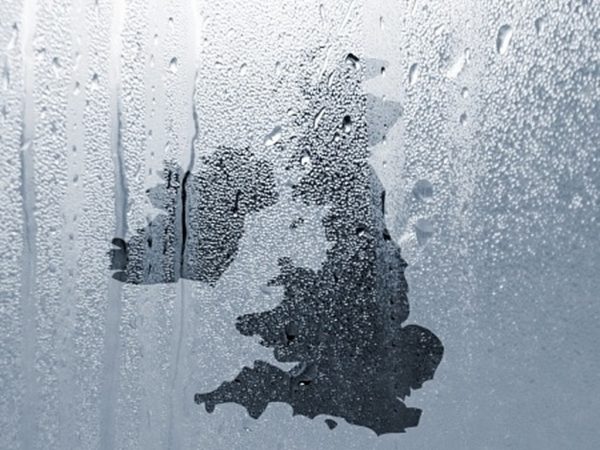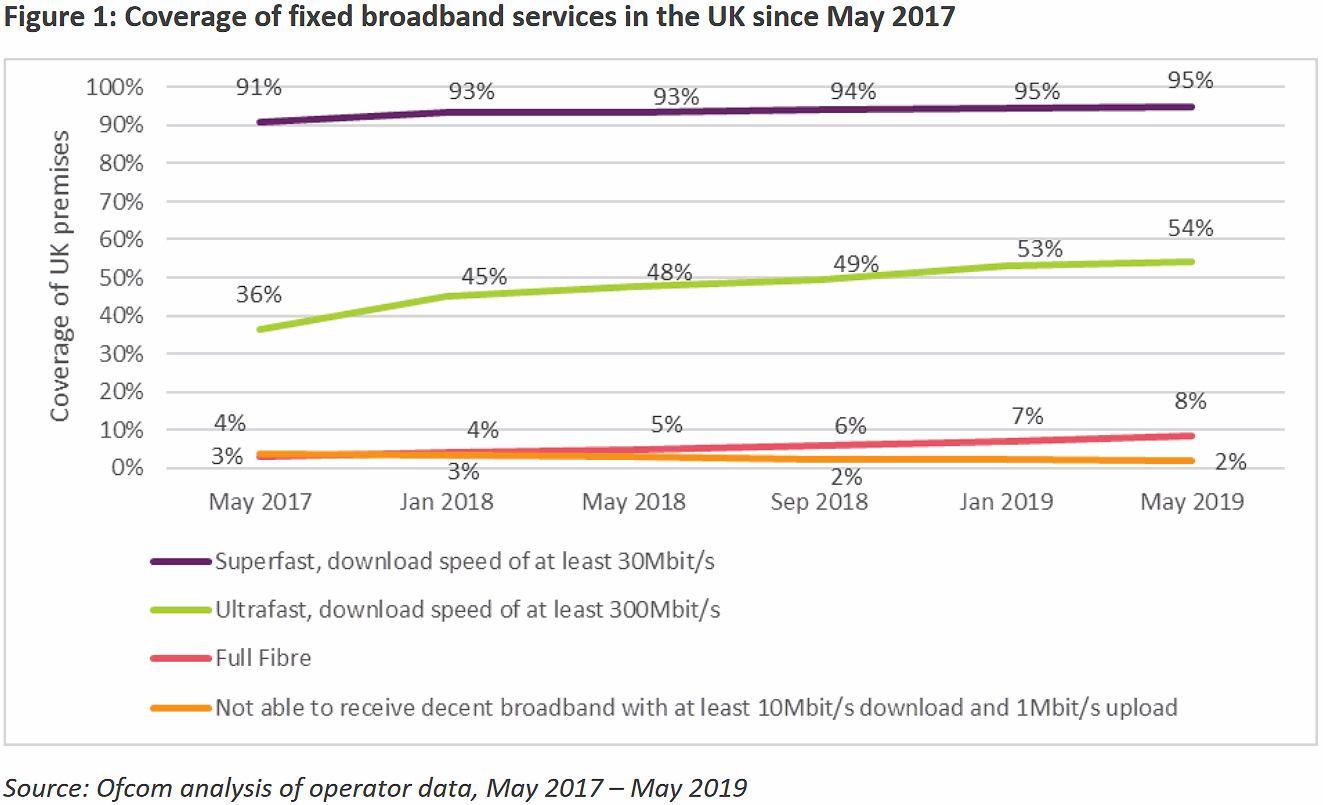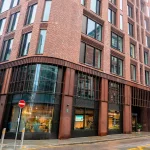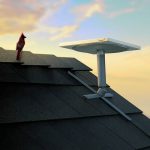Study Claims 236 UK Constituencies Have Poor Broadband and Mobile

A new study from consumer magazine Which? has claimed that people living in 36% of UK constituency areas (236 of the 650 total) do not have access to “decent 4G [mobile] or broadband” services. The study was based on old data from Ofcom and found that areas in rural Scotland and Wales bore the brunt of the problem.
At the time of writing Which? has only published a vague news article and we couldn’t find any table to depict their actual data for 4G mobile and broadband (we hope they’ll publish that later this morning). The news article also fails to clarify precisely what data from Ofcom they’ve used to reach their conclusions and how it was weighted.
In terms of defining what “decent” broadband constitutes, Which? used the government’s new Universal Service Obligation (USO) as a guide (i.e. 10Mbps download and 1Mbps upload), although it’s unclear where they set the coverage bar for this.
Advertisement
As for mobile, the group defined constituencies lacking “comprehensive” 4G coverage as those where more than 1% of outdoor premises did not have signal from all four mobile network operators (based on very old data from September 2018). Many areas would easily fall into that category as mobile coverage is notoriously variable and expecting near perfect coverage is perhaps unrealistic.
Aside from rural areas across Scotland and Wales, the study noted that many constituencies, “made up of mostly urban areas” including parts of Canterbury, Macclesfield, Maidstone, Norfolk, Southampton, Surrey and York, were also affected. A fair few seaside towns were also said to be “plagued by both substandard 4G and poor broadband“, including Dover, Cleethorpes, Great Yarmouth, Scarborough and Whitby, and Totnes.
Sadly no actual data for any of the aforementioned areas was included in their news report, which makes it exceedingly difficult to fact check their conclusions. We can however pick out a few examples to examine the broadband side of things.
For example, York is almost entirely covered by “superfast broadband” (24Mbps+) capable networks (same for Dover etc.), while Virgin Media and TalkTalk’s FibreNation platform have ensured that more than half of its premises can access a gigabit-capable or “full fibre” (FTTP) network. Openreach also has a growing chunk of FTTP and G.fast in the area. Suffice to say that some of Which?’s picks for bad constituencies have us puzzled.
Advertisement
At present fixed “superfast broadband” (24Mbps+) coverage sits at an estimated 96% of UK premises today (up from 83% in 2015) and this is predicted to reach 97-98% by the end of 2020. Similarly geographic outdoor coverage of 4G based mobile services from all four mobile operators has risen to 66% of the UK (up from 64% last year), although EE alone are able to reach 91%, but mobile is certainly still a problem area. Here’s what Ofcom’s own more recent data actually says for the UK.


Clearly broadband and mobile connectivity has improved a lot over the past few years, which is well illustrated above. Nevertheless there are still plenty of slowspots or weakspots for both fixed broadband and mobile connectivity to be found, particularly around remote rural communities. As you’d expect Which? has come up with some vague recommendations for the next Government, which are in desperate need of more definition.
Which?s’ Recommendations to the Next Government
* Set out an ambitious, joined-up strategy to deliver improved digital infrastructure, meeting the needs of people to be connected at home, at work and on the move.
* Set clear connectivity targets for the UK, with a clear roadmap for how and when they will be delivered and clarity on how existing initiatives will interact and work alongside each other.
* Improve 4G mobile coverage across the UK, ensuring consumers have access to a sufficient choice of operators, and addressing total and partial ‘not-spots’.
* Reduce the barriers to speedy and effective broadband rollout programmes, including a legal requirement for new-build homes to be built with gigabit-capable connections [ISPr Editor: This is still being consulted upon], and a communications strategy for consumer take-up.
None of this will come as much of a surprise since sparse rural communities, as well as a few digitally isolated urban areas, are often last on the list for upgrades. This is due to the disproportionate economic challenges of building new networks to cater for so few customers over a wide area.
We should add that the United Kingdom is by no means alone in having weak points, which is well illustrated by the EU’s most recent digital connectivity progress report, where we come above most other nations for superfast broadband and 4G coverage (here). Admittedly though the UK is still extremely weak on “full fibre” (FTTP) services but that is rapidly starting to change (here).
Advertisement
Richard Tang, Founder and Chairman of UK ISP Zen Internet, said:
“For too long, broadband connectivity has been a major issue for all around the UK and users particularly affected should rightfully feel aggrieved. No matter who occupies 10 Downing Street at the end of next week, the Government must deliver in paving the way for world-leading connectivity and ensure this is a priority moving forward.
This includes addressing issues now including the taxation of fibre cables, the ease of laying infrastructure and tackling a national skills shortage. These are critical ingredients for the success of the UK economy in an era where fast, reliable, robust connectivity is an absolute must and something everyone in the country deserves access to.”
In terms of solutions, there are currently a mix of different approaches being pursued. Firstly, Ofcom recently confirmed that the number of premises unable to get access via a “decent broadband” (10Mbps+) service has fallen to 2% or 578,0000 premises (down from 619,000 earlier this year), which is likely to fall again before the Government’s new legally-binding Universal Service Obligation (USO) is introduced in March 2020.
The new USO will enable anybody in a sub-10Mbps area, and not on a future roll-out plan for faster speeds (covering the next 12 months), to request a speed of at least 10Mbps, which is likely to be delivered via either a 4G or fixed fibre (FTTC or FTTP) service from BT (or KCOM if you live within their patch of East Yorkshire).
On top of that the Government recently pledged to cover the whole of the UK with “gigabit-capable” broadband services by the end of 2025, which is to be supported by an additional public investment of £5bn in order to help reach those in the hardest to reach (final 20%) of areas. Not to mention all the many voucher / subsidy schemes that are still running, such as the £200m Rural Gigabit Connectivity (RGC) programme.
However, we are still awaiting further details on this new programme and it will be a couple of years before they implement the new framework / policy (needed before builds can start). Of course it remains to be seen how effective any of these new programmes will be and whether they will achieve their goals. The 2025 target for gigabit broadband looks to be particularly challenging.
Finally, the Government has also committed £500m to support the recent £1bn industry-led agreement on a mobile coverage – Shared Rural Network (here), which aims to extend geographic 4G coverage to 95% of the United Kingdom by the end of 2025. Arguably most of what Which? wants is already happening.
Mark is a professional technology writer, IT consultant and computer engineer from Dorset (England), he also founded ISPreview in 1999 and enjoys analysing the latest telecoms and broadband developments. Find me on X (Twitter), Mastodon, Facebook, BlueSky, Threads.net and Linkedin.
« UK DataKom and Pinnacle ISP Merger Creates £10m Business
Broadband ISP BT Experiments with Own DoH – DNS over HTTPS »























































Comments are closed